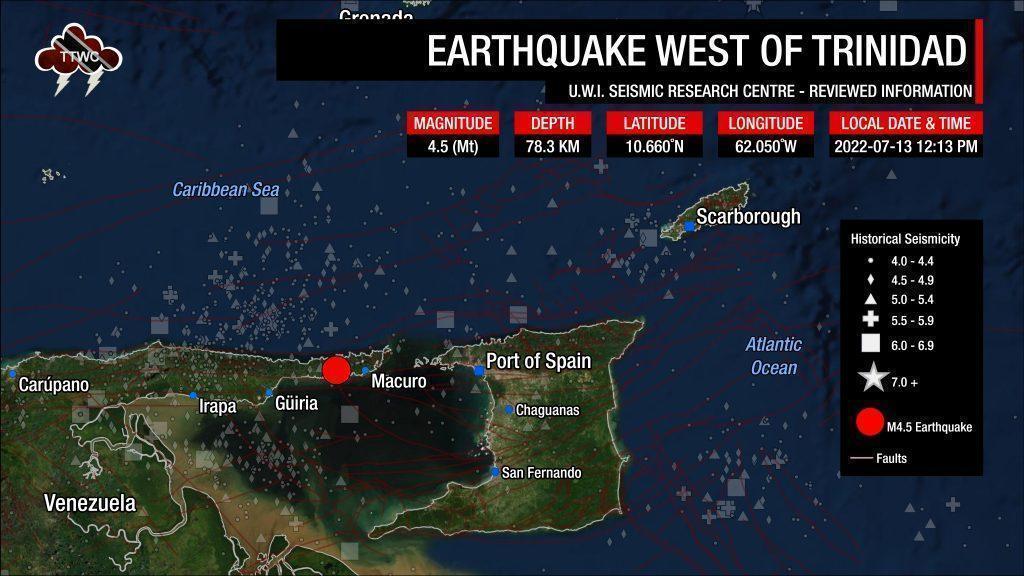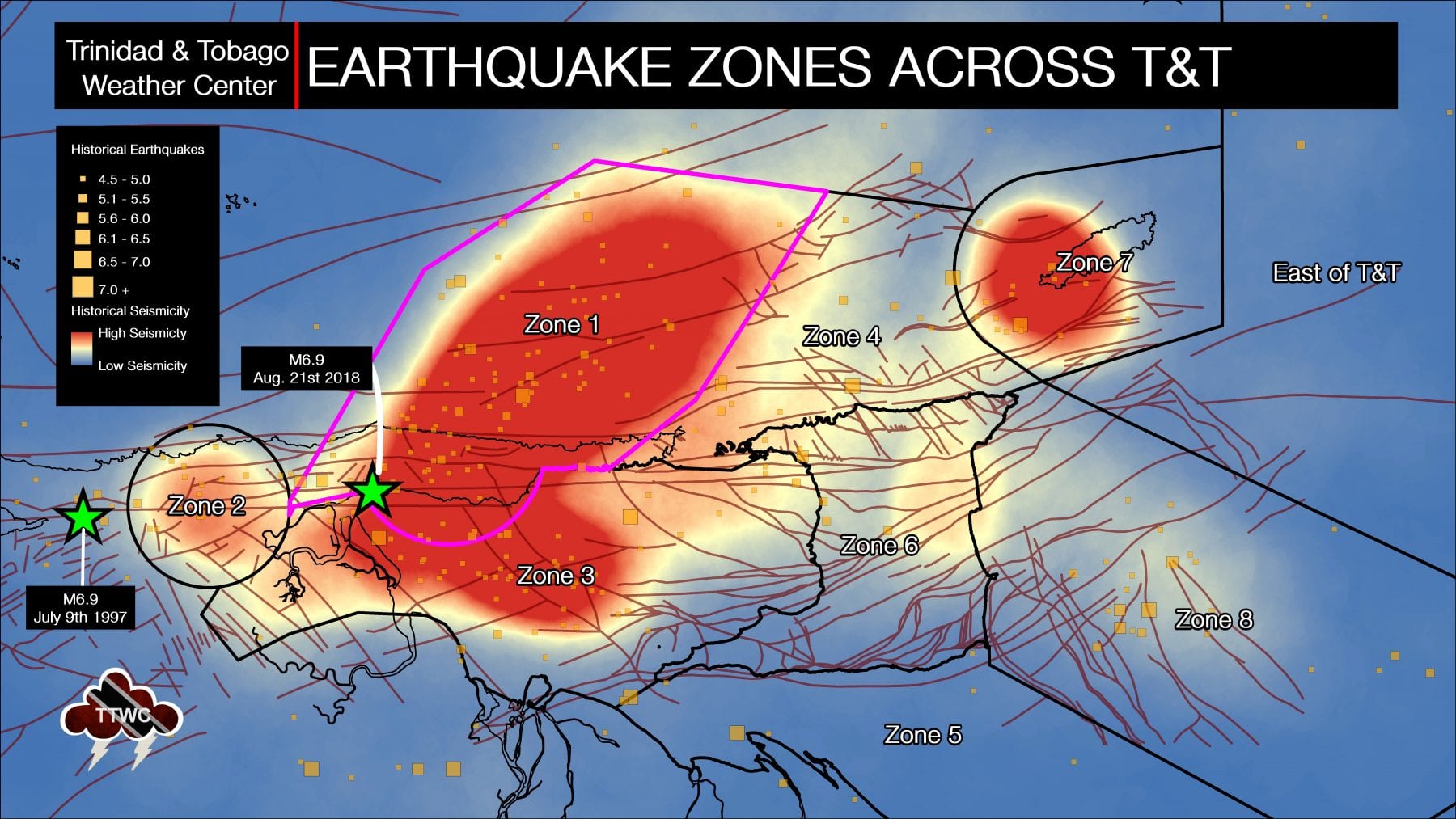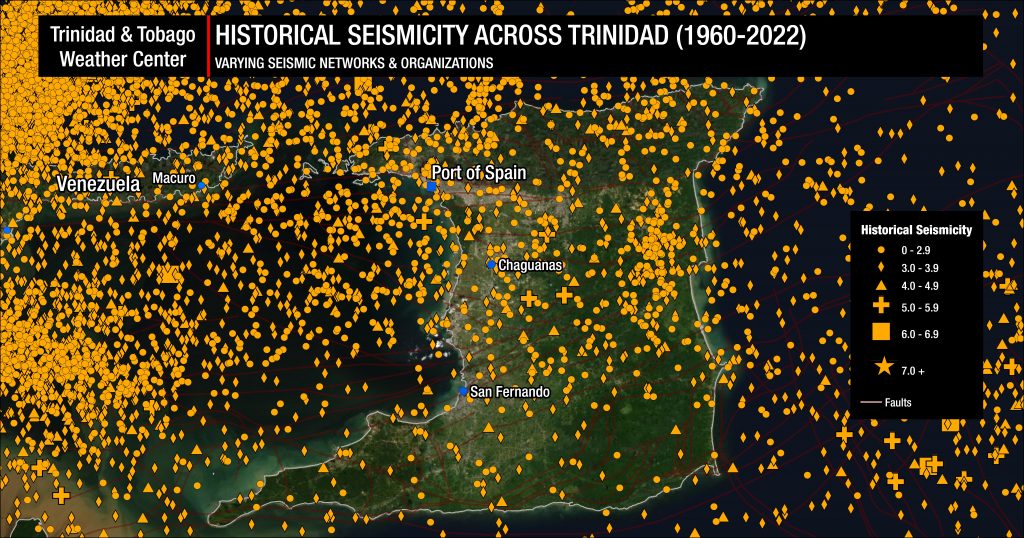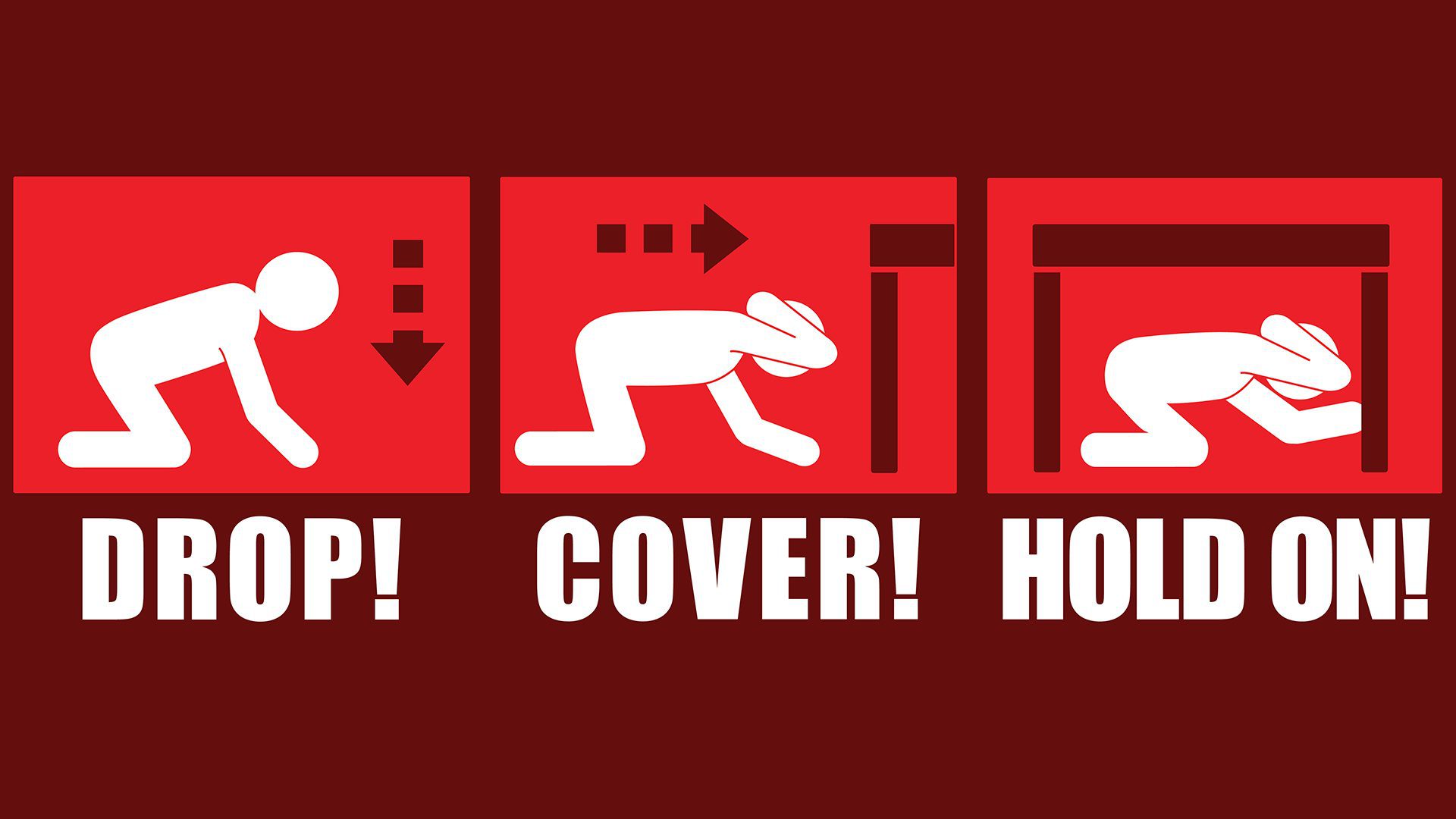At 12:13 PM on Wednesday, July 16th, 2022, the University of the West Indies Seismic Research Centre (UWI SRC) recorded a light magnitude 4.5 (mt) earthquake west of Trinidad.
The earthquake was located at 62.050°W and 10.660°N, approximately 12.01 kilometers west of Macuro, Venezuela, 29.2 kilometers east-northeast of Güiria, Venezuela, and 59.1 kilometers west of Port of Spain, Trinidad and Tobago. The event was located at a depth of 78.3 kilometers below the Paria Peninsula of Venezuela.

This information has been reviewed by an analyst at the UWI SRC, the authority for seismic and volcanological information in the English-speaking Eastern Caribbean.
Weak shaking was reported felt across parts of northwestern Trinidad. You can submit felt reports to the University of the West Indies Seismic Research Centre.
There was no tsunami threat.
There are four conditions necessary for an earthquake to cause a tsunami:
- The earthquake must occur beneath the ocean or cause material to slide within or into the ocean.
- The earthquake must be strong, at least magnitude 6.5.
- The earthquake must rupture the Earth’s surface and it must occur at a shallow depth – less than 70 kilometers below the surface of the Earth.
- The earthquake must cause vertical movement of the seafloor (up to several meters).
None of these conditions occurred.
Note that different seismic monitoring agencies use different methods, or several methods, for processing quake parameters across the globe. Each method has its limitations and will likely produce different results within the range of the data’s uncertainty. This is generally accepted within the scientific community.
Read More
Earthquake Magnitude & Intensity
Can earthquakes be predicted or forecasted?

Seismic zone one is a complex and, without a doubt, the most seismically active area near Trinidad. According to the UWI SRC, this area is the second most seismically active area in the Eastern Caribbean and has generated major-great earthquakes in historic times.
The 1766 magnitude 7.9 event, estimated to have been located in this area, destroyed the then Capital of San José. The 1888 magnitude 7.5 event was damaging from Trinidad to St. Vincent. The largest event for the instrumental period, i.e., since 1952, occurred on September 20th, 1968, and was of magnitude 7.0. Significant damage was caused in Venezuela, and Trinidad, where there was damage in Port of Spain.
In this area, the South American plate is beginning to rapidly descend into the Earth’s mantle as the detached oceanic lithosphere exists at depths between 50 to 300 kilometers within zone one. (Russo et al. 1993).
At shallower levels, the North Coast Fault Zone and the El Pilar Fault, part of the Boconó-San Sebastian-El Pilar Fault system, run across Zone 1. These fault systems compensate for the stress built up as the Caribbean plate slides past the South American plate. Hence, most of these earthquakes from these fault systems are shallow to moderate depths between 0 to 70 kilometers.
The UWI SRC says approximately 65 events of magnitude 2.1 and above are located in the area annually.
Where this particular earthquake occurred, within 10 kilometers of the epicenter, over 375 earthquakes have been located, with the strongest magnitude event occurring on April 10th, 1935, at a magnitude of 6.5. However, within recent history, the second strongest quake was a magnitude 5.5 event on September 4th, 2020. Earthquake depths in this area are variable, between zero and 169.1 kilometers.
Has there been an increase in seismic activity?

Trinidad and Tobago and the surrounding region are very seismically active. Across the Eastern Caribbean, over 2,200 earthquakes are recorded annually. Since 1990, the University of the West Indies Seismic Research Centre records an annual average of 280 earthquakes in the Trinidad and Tobago region (area bounded by 9.5°- 11.5°N & 59.5°W – 63.5°W). Of these 280 quakes, 50 of these seismic events are, on average, above magnitude 3.5.
Most earthquakes occur northwest of Trinidad in an area known as North of the Paria Peninsula, which has the second-highest seismicity in the Eastern Caribbean. According to the UWI SRC, approximately 65 events of magnitude 2.1 and above are located in the area annually.
However, the UWI SRC has said regional seismic and volcanic activity has been elevated for several years in their annual report for 2020 to 2021.
On average, the Eastern Caribbean has seen a pattern of major (M7.0-M7.9) quakes every 20 to 30 years. That pattern has stayed true. The last major (M7.0-7.9) quake occurred north of Martinique in 2007.
Historical patterns indicate that great quakes (M8.0+) on the Richter Scale have occurred every century in the region. The probability of another event at that level is high since the last >M8.0 earthquake occurred in 1843. While it is impossible to say definitively when the next great quake would occur in the region, the time since the last one is now more than 170 years ago.
It is important to note seismic activity *cannot* be predicted – meaning the precise time, date, magnitude, depth, etc., cannot be known ahead of time based on current research and technology.
Now is the time to create or go over your earthquake preparedness plan and know what to do during, before, and after an earthquake.












